Get PeakVisor App
Sign In
Search by GPS coordinates
- Latitude
- ° ' ''
- Longitude
- ° ' ''
- Units of Length

Yes
Cancel
Share ×

Scan the QR code and open PeakVisor on your phone
❤ Wishlist ×
Choose
Delete
Whether you're searching for lazy seaside strolls or demanding mountain treks, Italy’s Cilento, Vallo di Diano and Alburni National Park has an adventure available for every hiker. There are 346 named mountains in Cilento, Vallo di Diano and Alburni National Park. The highest and the most prominent mountain in the park is Monte Cervati (1,899 m/6,230 ft).
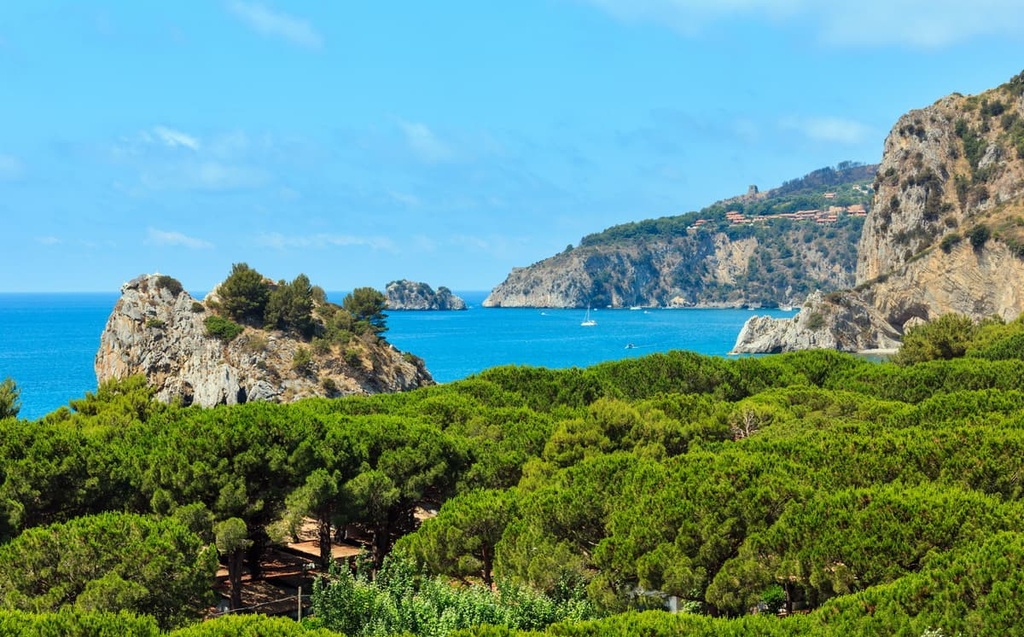
Perched on Campania's coastline overlooking the Tyrrhenian Sea is Cilento, Vallo di Diano and Alburni National Park (Parco Nazionale Cilento, Vallo di Diano e Alburni). The park covers an area of approximately 1,810 sq. km (699 sq. mi) within the Province of Salerno in southwestern Italy.
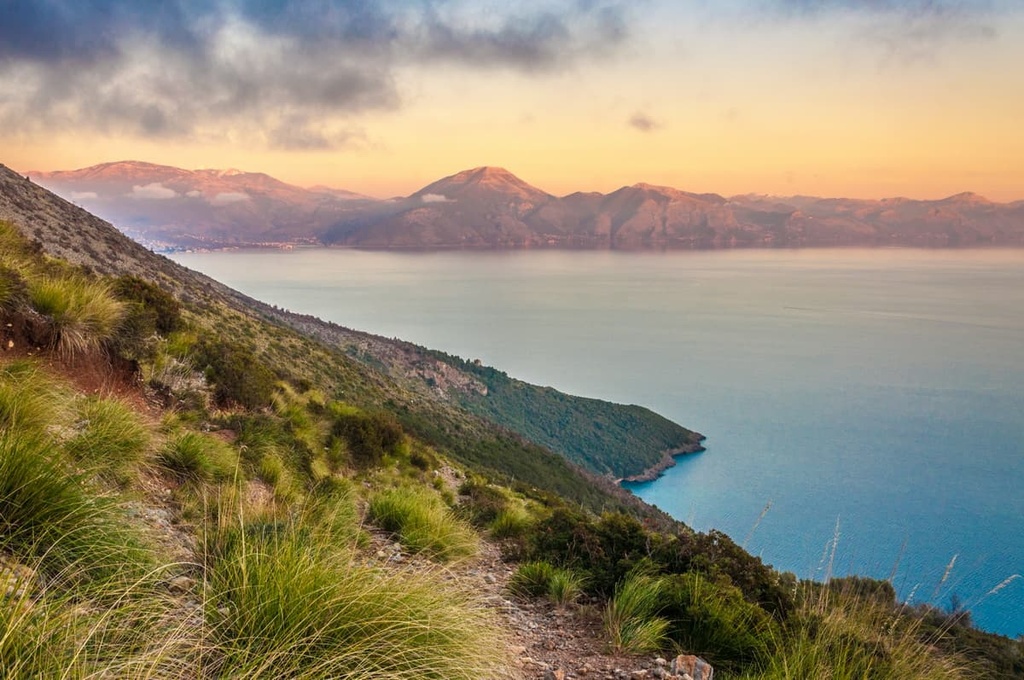
Cilento, Vallo di Diano and Alburni National Park's main feature is Cilento, a region of southern Campania that encompasses the entire park. Cilento's coastline stretches for roughly 100 km (62 mi) from Paestum in the north to Sapri on the Gulf of Policastro.
The coastline of Cilento is a popular tourist destination in its own right, but it is generally overshadowed by the famous Amalfi Coast, which is located just to the north. Cilento's coast is renowned for its rocky inlets and unspoiled beaches.
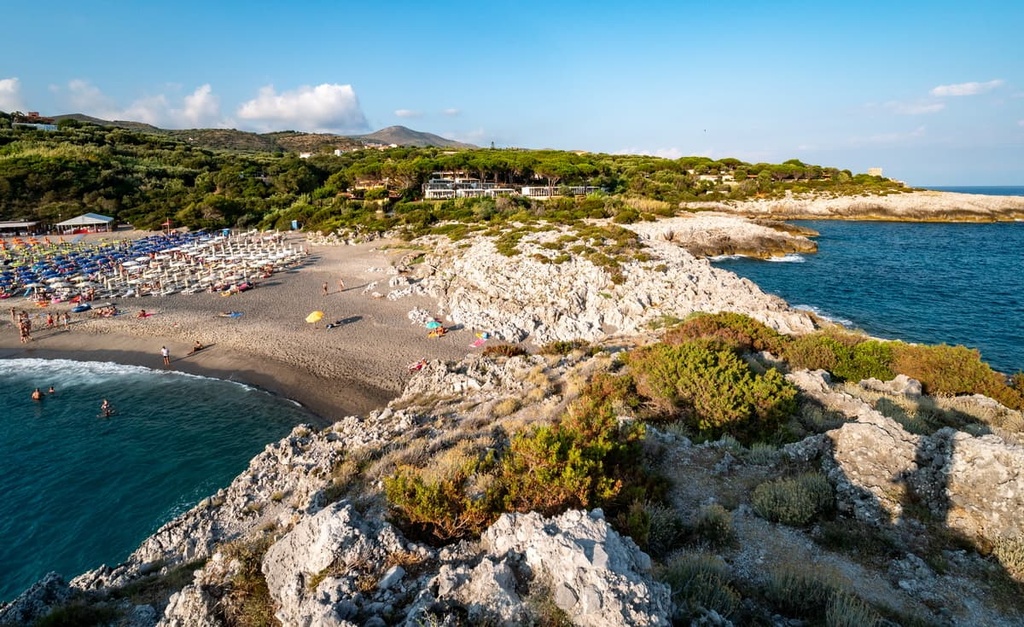
Cilento, Vallo di Diano and Alburni National Park contains the Alburni, a rugged mountain massif that’s nicknamed the “Dolomites of Campania.” The range takes its name from its highest summit, Monte Panormo (1,742 m/5,715 ft), which is historically known as Monte Alburno. The Alburni forms a part of the 1,400 km (840 mi) long Apennines.
On the park's eastern boundary is the Diano Valley (Vallo di Diano), which is considered a geographical subregion of Cilento. This wide valley is known for its numerous impressive cave systems. The Diano Valley is also home to Certosa di Padula, the second-largest charterhouse (Carthusian monastery) in Italy.
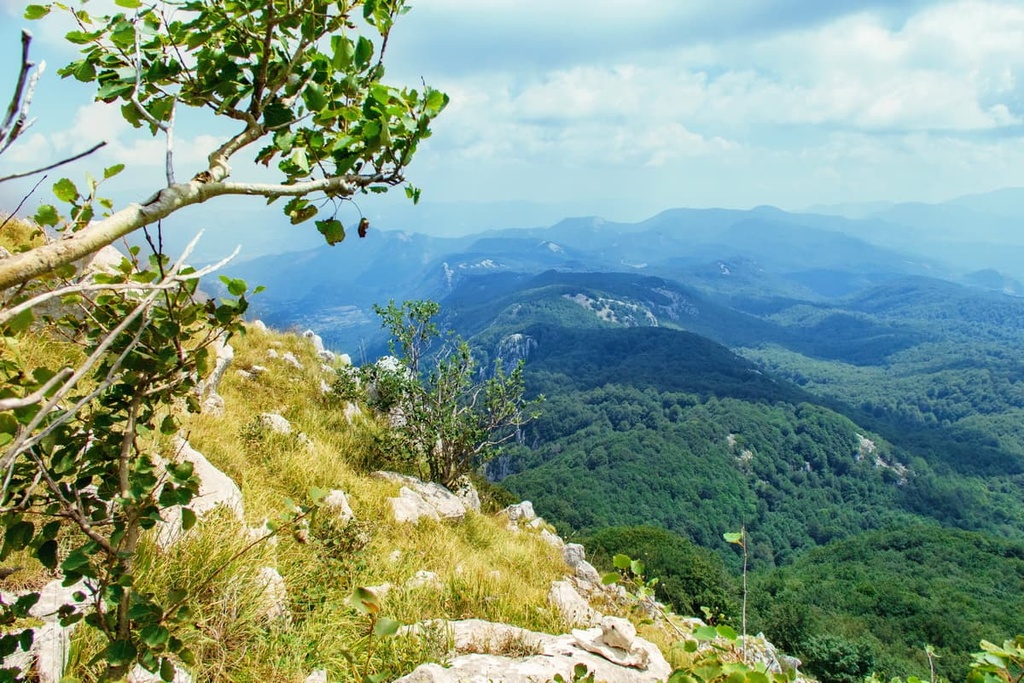
There are several other national and regional parks that are located within driving distance of Cilento, Vallo di Diano and Alburni National Park.
For example, Appennino Lucano - Val d'Agri - Lagonegrese National Park (Parco Nazionale dell'Appennino Lucano–Val d'Agri–Lagonegrese) borders the Diano Valley to the east, while Pollino National Park (Parco Nazionale del Pollino) is located approximately 50 km (31 mi) to the southeast of the park.

Additionally, located roughly 20 km (12.4 mi) north of Cilento, Vallo di Diano and Alburni National Park is Picentini Mountains Regional Park (Parco Regionale dei Monti Picentini). Mount Vesuvius National Park (Parco Nazionale del Vesuvio) is also situated approximately 70 km (43 mi) to the northwest of Cilento, Vallo di Diano and Alburni National Park.
Notable settlements in Cilento, Vallo di Diano and Alburni National Park include Agropoli, Teggiano, Castellabate, and Acciaroli. Naples (Napoli), the regional capital of Campania and Italy's third-largest city, is located approximately 100 km (62 mi) to the north of the park, too.
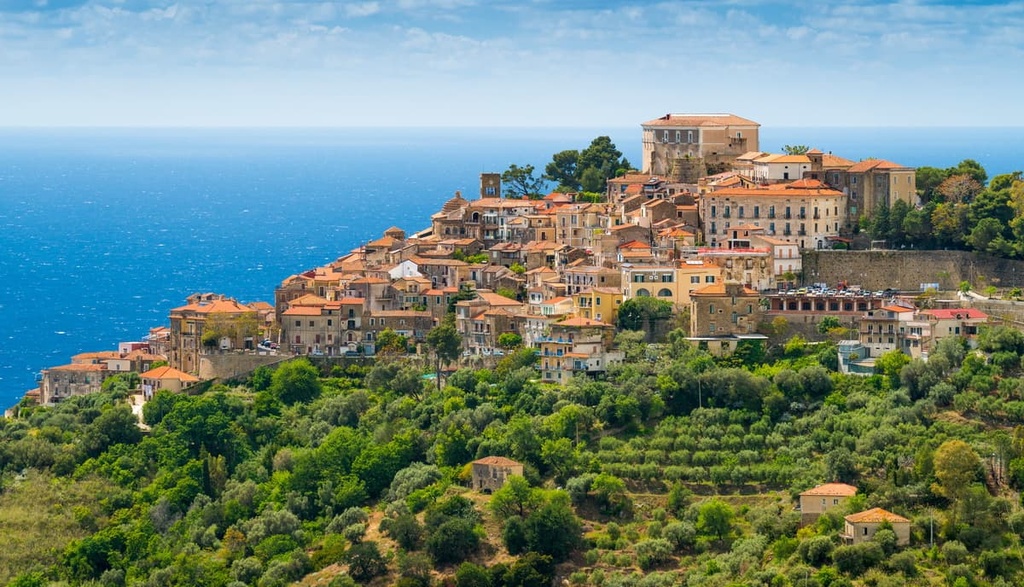
The geomorphology of Cilento, Vallo di Diano and Alburni National Park is extremely varied. It ranges from gently rolling hills along the coastline to dramatic mountains and valleys that are situated further inland. Turbidite flysch is common along the coast of the park, while limestone is prevalent in the Alburni.
The park's geomorphological variation is due to the presence of both Mesozoic carbonate successions and terrigenous successions. The majority of Cilento, Vallo di Diano and Alburni National Park is composed of sedimentary rocks.
These sedimentary rocks are diverse and they include both carbonate and siliciclastic rocks, such as sandstones, limestones, and quartz. As a result of the park's limestone-heavy strata, karst topography is widespread in the region. In fact, there are many caves, sinkholes, and cavities that are located along the park's coastline and within the Alburni.
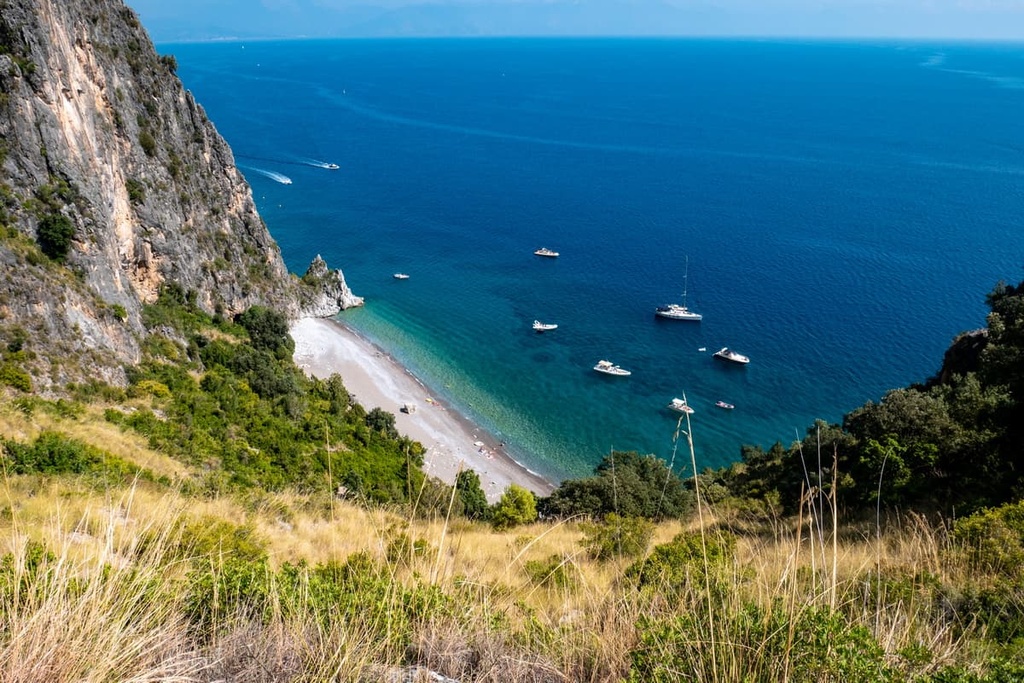
Notable caves in the park include the 5 km (3 mi) long Castelcivita Cave (Grotte di Castelcivita) in the Alburni and the coastal Pertosa Cave (Grotte di Pertosa), which is accessible only by boat.
Cilento, Vallo di Diano and Alburni National Park is a part of the southern Apennines' fold-and-thrust belt. This region formed between the Cretaceous and Pleistocene periods due to a collision between the European and African tectonic plates and the widening of the Tyrrhenian Sea oceanic basin.
Due to the region's long lithographic and orogenetic history, Cilento, Vallo di Diano and Alburni National Park is also of great interest to geologists. In particular, post-orogenic rock deposits from the Quaternary period give geologists a key insight into how climate change has altered the landscape in the region over the millennia.
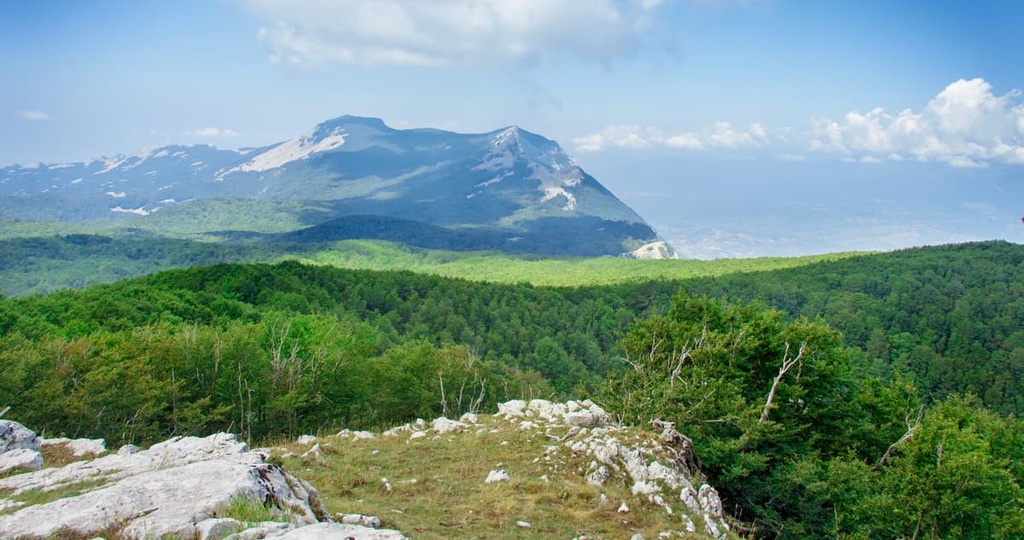
Among these deposits are Mesozoic limestones and dolomites as well as Miocene siliciclastic turbidites. Such deposits are integral to the formation of the central Mediterranean.
Furthermore, as a result of the park's diverse and unusual lithology, it's designated as a UNESCO Global Geopark.
With habitats varying from dense forests to rugged mountainsides, Cilento, Vallo di Diano and Alburni National Park boasts some of the most interesting wildlife in Campania. Read on to learn about Cilento, Vallo di Diano and Alburni National Park's flora and fauna.
Large mammals that are found within Cilento, Vallo di Diano and Alburni National Park include Apennine wolves, wild cats, wild boar, and roe deer. Cilento, Vallo di Diano and Alburni National Park is also home to one of the largest otter populations in Italy.

The forests and meadows of Cilento, Vallo di Diano and Alburni National Park support a wide variety of rodents, including garden dormice, bank voles, and yellow-necked mice.
Notable birds of prey that nest in Cilento, Vallo di Diano and Alburni National Park include golden eagles, peregrine falcons, short-toed snake eagles, and lanner falcons. Rock partridges, white-throated dippers, black woodpeckers, and bullfinches also call the park home.
The ponds and rivers of Cilento, Vallo di Diano and Alburni National Park support several amphibian species, such as Apennine yellow-bellied toads, common toads, and agile frogs. Reptiles found in the park include spectacled salamanders, asp vipers, grass snakes, and four-lined snakes.

The rosalia longicorn, one of Europe's rarest insects, inhabits Cilento, Vallo di Diano and Alburni National Park.
Approximately 1,800 native plant species grow in Cilento, Vallo di Diano and Alburni National Park. Of these species, around 10 percent are endemic.
Beech trees are one of the most common sights in Cilento, Vallo di Diano and Alburni National Park. In fact, beech forests cover over 21 percent of the park’s total area. Turkey oaks, Aleppo pines, and holm oaks are also present in the region.
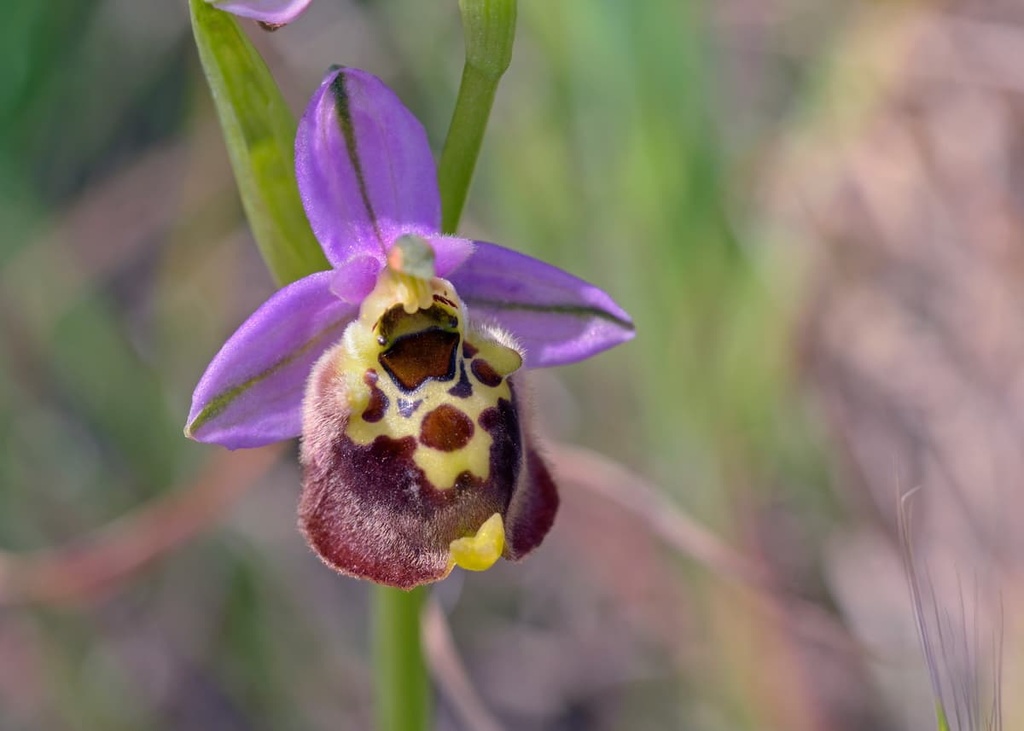
On the slopes of the highest mountains of the Alburni, rare Etna barberry grows along with endemic saxifrage species such as Saxifraga porophylla and Saxifraga ampullacea.
The Primula palinuri, a type of primrose, is endemic to Cilento and is a symbol of the park. Other notable flowering species that live in the region include bellflowers and sea daffodils. Near the town of Sassano is the Valley of Orchids (Valle delle Orchidee), where it's possible to observe nearly 70 orchid species.
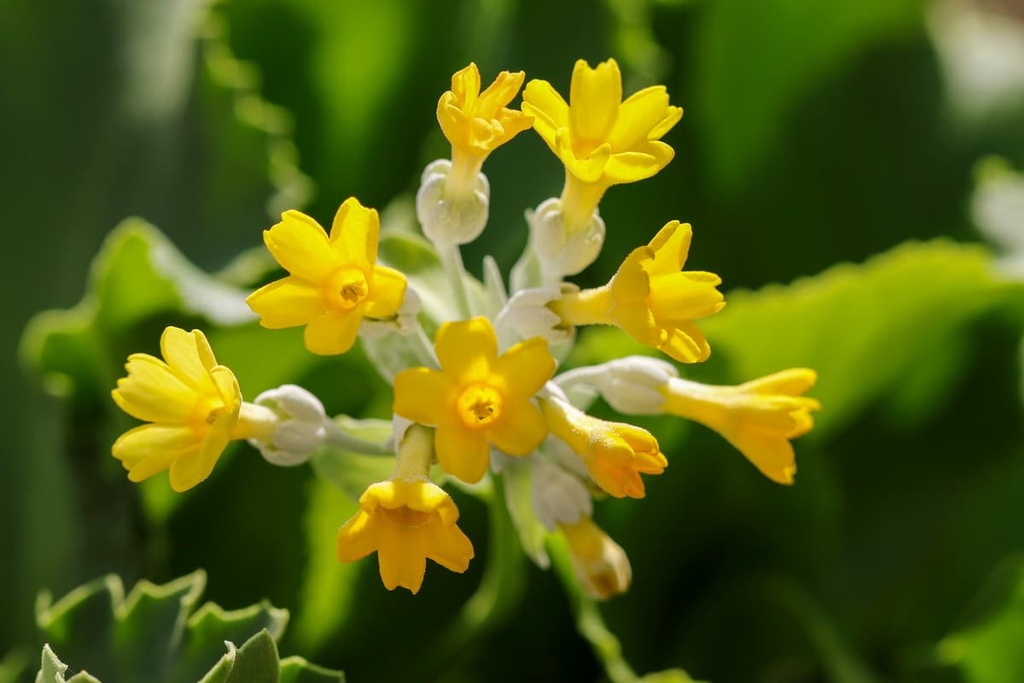
Humans have inhabited Cilento since the Middle Paleolithic period, over 300,000 years ago. During this time, humans were able to live successfully in the region due to the area’s numerous karst cave systems, which provided shelter and warmth.
Early tools from this period have been found in coastal caves near Palinuro and Scario, and inland on ancient paths through the Diano Valley. There's also evidence of transhumance farming and ritual altars in Cilento dating back to the Bronze Age.
The Ancient Greeks arrived in Cilento in the seventh century BCE in search of copper and obsidian. They built several colonial cities, including Poseidonia, Pixunte, and Molpa.
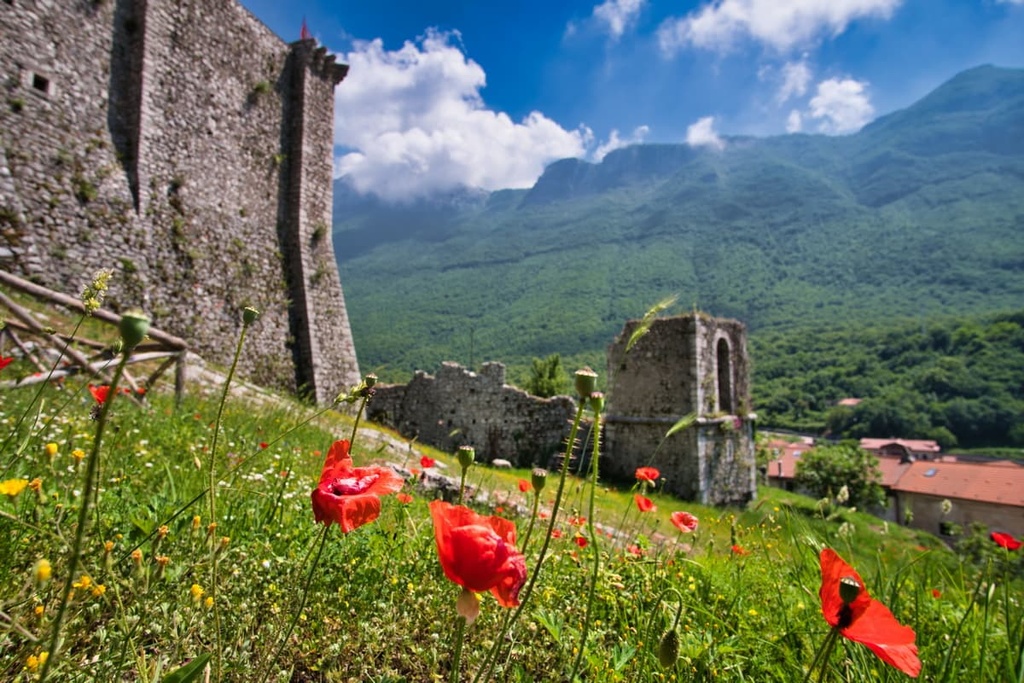
Meanwhile, Greeks from Phocaea also arrived around the same time, founding the cities of Elea and Porta Rosa. During this time, the city of Elea was home to the Eleatic School, which was one of the most important philosophical schools in Europe of the era. It was also one of Europe's first medical schools.
By the fourth century CE, Romans, Lucanians, and Christians to the east began trading and warring, intertwining their cultures with one another, turning Cilento into one of the most multicultural areas of southern Italy.
However, following the fall of the Western Roman Empire, Cilento went through a long period of barbarism. Cilento was affected by coastal raids by the Saracens. It also experienced battles during the Gothic Wars and it subsequently felt the effects of feudal imposition from the Lombards.
Following the Norman Conquest of southern Italy in the eleventh century, Cilteno was transformed into a land of barons and estates. In the years that followed, the land switched hands between many civilizations, including the Swabians, the Sanseverinos, and Angevins, each of which fought for control of Cilento.
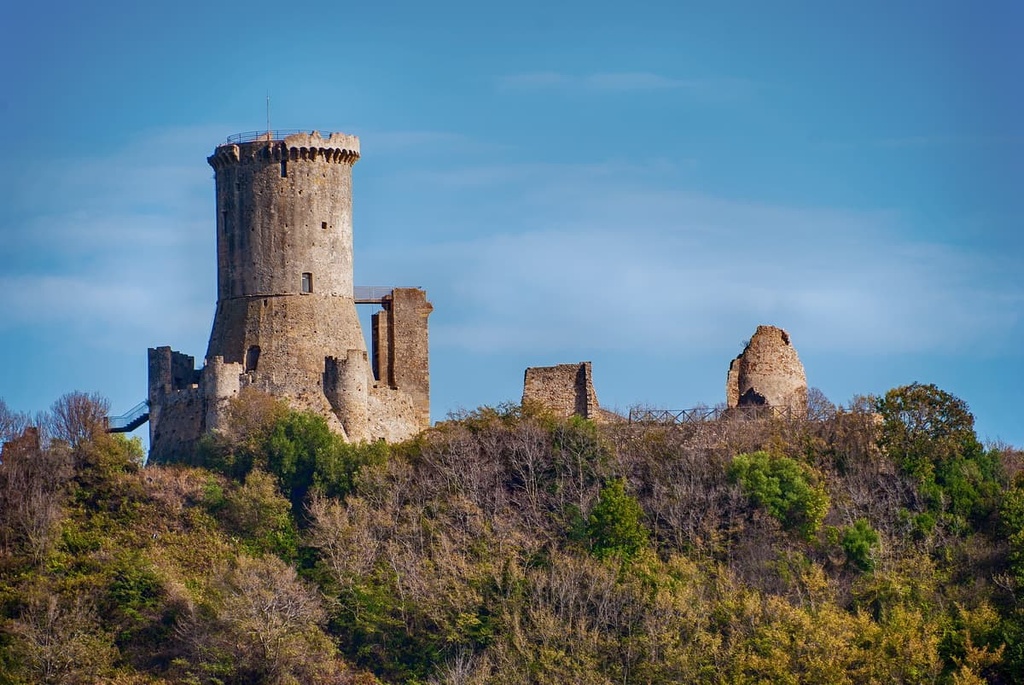
The sixteenth and seventeenth centuries are considered some of the bloodiest in Cilento's history. They contributed to the birth of highway robberies and overall brigandage, both of which dominated life in the region during this time.
Nowadays, Cilento is thankfully much more peaceful, as the landscape was designated a national park in 1991 to protect its diverse nature, unique geology, and cultural heritage.
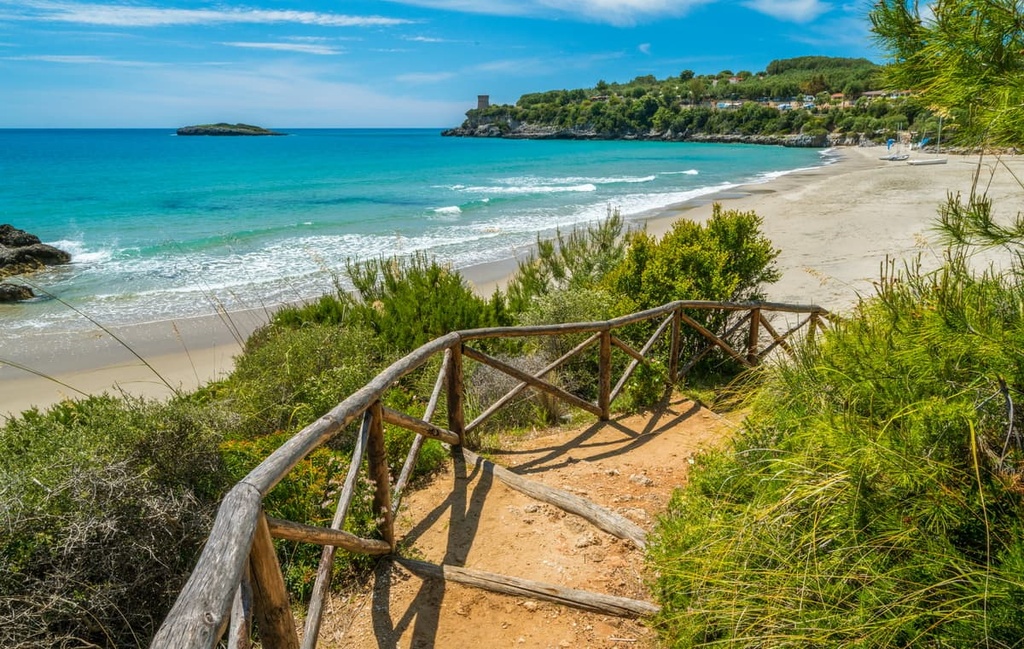
Cilento, Vallo di Diano and Alburni National Park is one of the largest national parks in Italy. As a result, there are many isolated parts of the park, especially on the mountainsides, that make for great hiking destinations.
During your visit to Cilento, Vallo di Diano and Alburni National Park, ensure you bring topographic maps, hiking boots, and enough food and water for your adventures. Map out your route carefully, and inform others of your intended itinerary before you start hiking.
Read on to find out more about some of the best hikes in Cilento, Vallo di Diano and Alburni National Park.
Monte Cervati (1,899 m/6,230 ft) is the highest mountain in Cilento, Vallo di Diano and Alburni National Park. This extinct volcano is not a part of the Alburni as it is part of a separate massif that also contains the park's second-highest summit, la Nevera (1,838 m/6,030 ft).
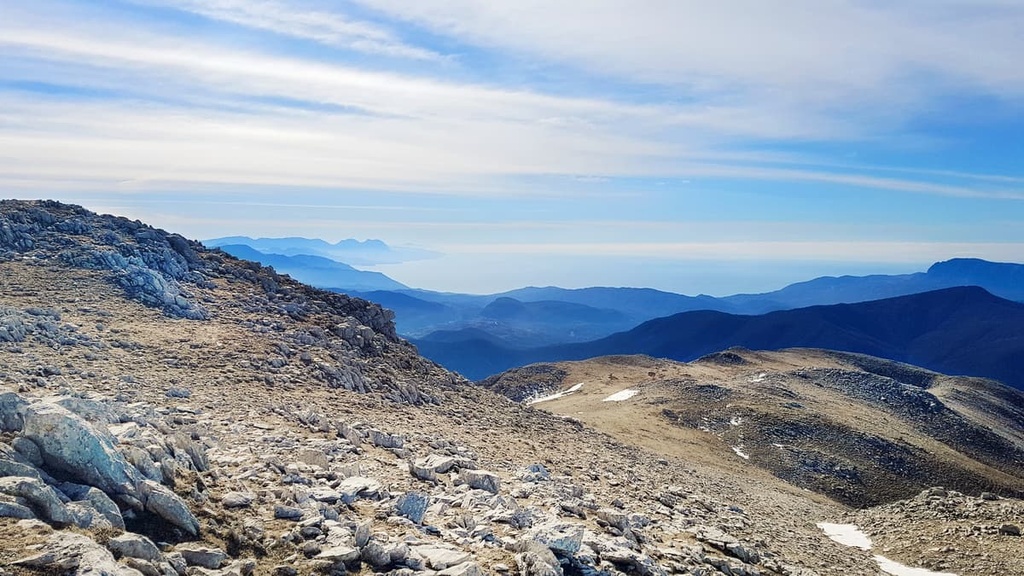
Monte Cervati is fairly remote but is easily reachable from the nearby town of Sanza. Pilgrims also hike this mountain to visit the Madonna del Cervato Sanctuary (Santuario della Madonna delle Nevi), which is located near the summit.
The best way to scale Monte Cervati is on the Sentiero Italia CAI 02, which leads to the rifugio Cervati (1,601 m/5,252 ft). This path is 10.3 km (6.4 mi) in length and takes about 5 hours to complete.
Monte Panormo (1,742 m/5,715 ft) is the highest mountain in the Alburni, and it offers some of the park's best views. Also known as Monte Alburni, Monte Panormo takes its name from the panoramas that are visible from its slopes.
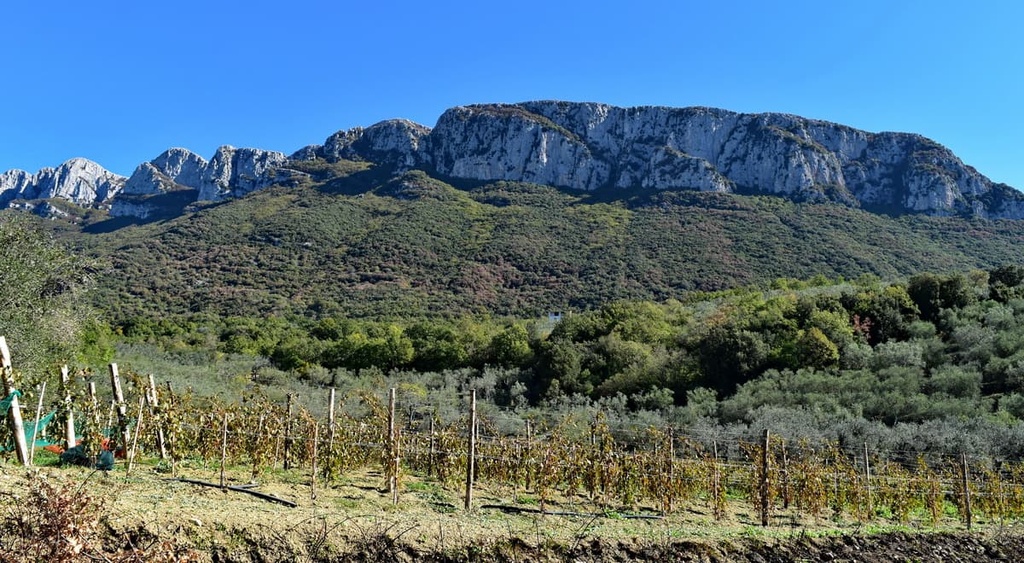
The best way to climb Monte Panormo is to start from the small town of Otatti, which is located to the south of the mountain. From Otatti, you'll need to drive up the mountain road to the rifugio Panormo (1,352 m/4,436 ft).
This out-and-back trail to the summit of Monte Panormo is 11 km (6.8 mi) in length and takes approximately 5 hours to complete. The walk takes you through beautiful beech forests and karst terrain. Furthermore, the summit of Monte Panormo affords sweeping views of the Vallo di Diano and Cilento and all the way to Basilicata.
Costa Palomba (1,125 m/3,691 ft) is well-worth visiting if you want to discover Cilento's ancient history. Atop this mountain rests the Antece, which is also known as the “warrior of Costa Palomba.”
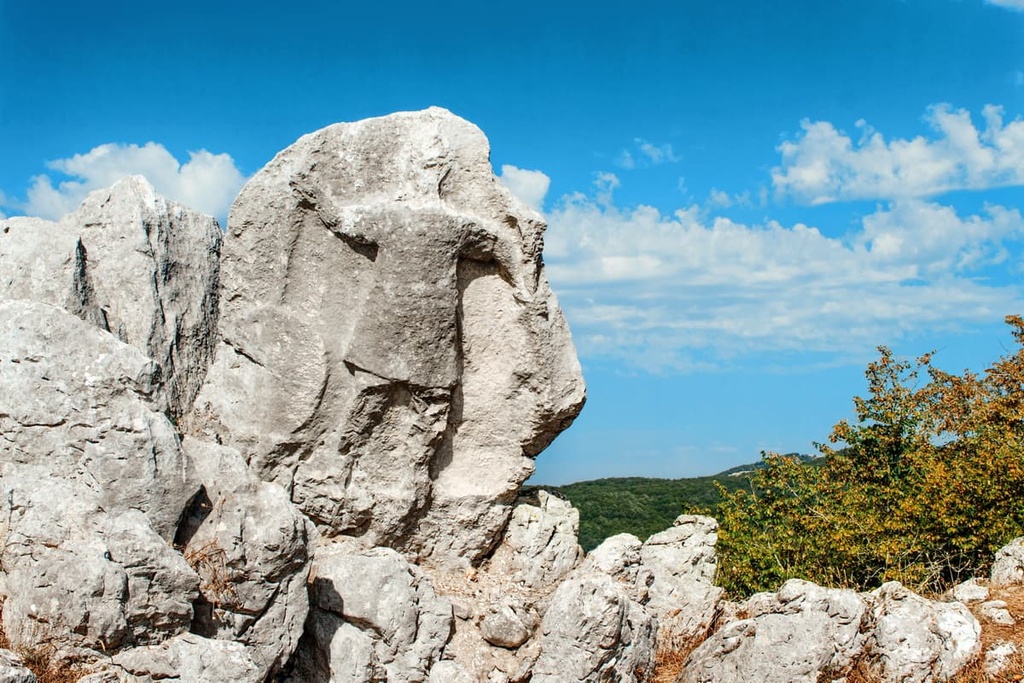
The origins of this carving of a man in stone are unclear, but it's believed it was an important religious site for prehistoric Lucanians. The easiest way to reach the Antece atop Costa Palomba is from the town of Sant'Angelo a Fasanella.
This demanding out-and-back trail is approximately 8 km (5 mi) in length and takes approximately 6 hours to complete. The trail first leads you to the summit of Pizzo Pilieri (721 m/2,365 ft) and then it takes you to Costa Palomba.
Monte Gelbison (1,705 m/5,594 ft) is one of the most easily recognizable mountains in Cilento, Vallo di Diano and Alburni National Park. Atop Monte Gelbison is the Madonna di Novi Sanctuary (Santuario della Madonna del Monte Sacro), which is one of the most visited sanctuaries in Campania.
A huge cross tops the sanctuary, which is illuminated at nighttime. The word Gelbison is of Arabic origin, and it means ‘the Mountain of the Idol.’ It is named for the tenth-century sanctuary that’s located on its summit.
One of the best ways to climb Monte Gelbison is from the town of Novi Vellia. This out-and-back trail is 7 km (4.3 mi) in length and takes around 8 hours to complete. From the summit, you'll get to enjoy views across Cilento that stretch all the way to the Tyrrhenian Sea.
Monte Stella (1,131 m/3,710 ft) was originally known as Monte Cilento, and it is where the region takes its name. Today, the mountain is one of the main features of the Stilaro Valley (Vallata dello Stilaro). Monte Stella is popular with hikers as it provides one of the best views of Cilento's coastline.
On the slopes of Monte Stella is the Hermit of Santa Maria della Stella (Eremo di Santa Maria della Stella), a cave that was once inhabited by Byzantine monks in the eleventh century. Monte Stella is also located close to the Castello di Rocca Cilento, a historic ninth-century castle.
One of the best ways to scale Monte Stella is from the town of Omignano, which is located to the northwest of the mountain. This out-and-back trail is 3.6 km (2.2 mi) in length and takes approximately 2 hours to complete.
Despite its modest height, Monte Bulgheria (1,225 m/4,019 ft) is one of the most popular mountains to climb in Cilento, Vallo di Diano and Alburni National Park.
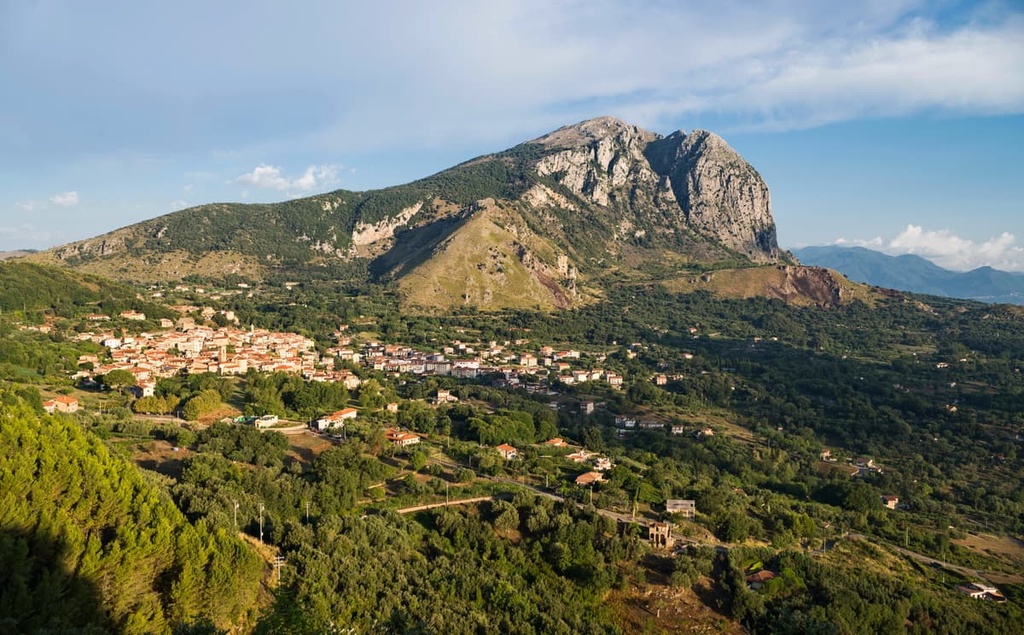
It also provides some of the park's finest views, as it overlooks the Gulf of Policastro. Monte Bulgheria is nicknamed the “Sleeping Lion” because it resembles a lion when viewed from the east.
Furthermore, Monte Bulgheria is a historic mountain that's been inhabited since ancient times. The mountain takes its name from the Bulgar tribe who settled in what is now the town of Celle di Bulgheria in the fifth century following the Gothic Wars.
One of the best ways to scale Monte Bulgheria is via the looped trail that starts from the town of San Giovanni a Piro. This trail is approximately 8.5 km (5.2 mi) in length and takes around 4 hours to complete.
Despite the fact that it is often overlooked in favor of the Amalfi Coast to the north, Cilento is home to many beautiful mountain villages and seaside resorts. Read on to find out more about some of the best towns in Cilento, Vallo di Diano and Alburni National Park.
Agropoli is the largest settlement in Cilento. This seaside town is considered a gateway to Cilento, Vallo di Diano and Alburni National Park due to its position on the park’s northern boundary.
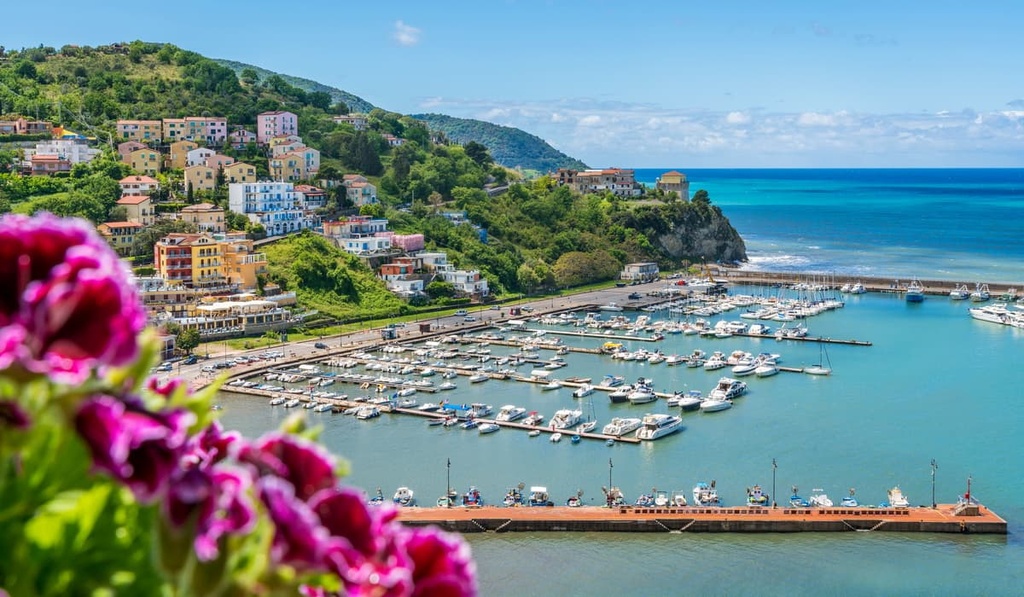
Agropoli is very historic, as it has been inhabited since the Neolithic period. It has strong links to the Byzantines and is home to the sixth-century Angioino Aragonese Castle (Castello Angioino Aragonese). When you're not busy visiting Agropoli’s historic sites, be sure to soak up some sun on the beaches of Trentova Bay (Baia di Trentova).
Popular hotels in Agropoli include Hotel Residence La Darsena, Hotel Myrtus, and Stella Marina Agropoli.
If you want to spend the night in the Vallo di Diano, check out the community of Teggiano. In addition to being the valley's largest settlement, Teggiano is known for its many well-preserved medieval monuments, including the Teggiano Cathedral (Duomo di Teggiano), the Sanseverino Castle (Castello Sanseverino), and the Diocesan San Pietro Museum (Museo Diocesano San Pietro).
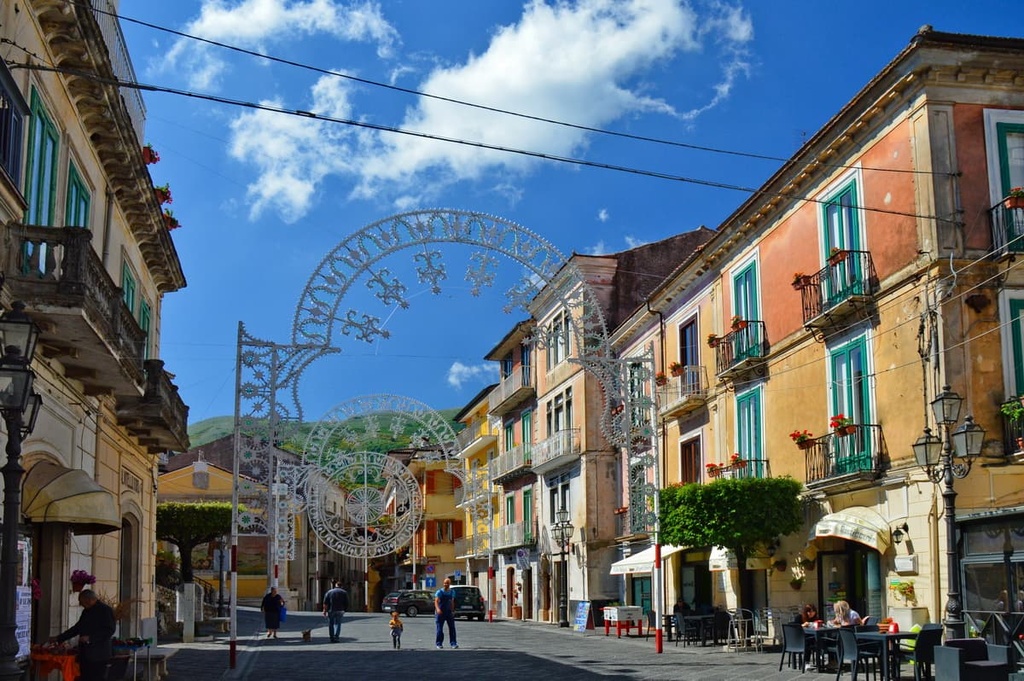
As it is located at an elevation of 637 m (2,090 ft), you can enjoy many stunning views of the surrounding valley from the edge of Teggiano. Teggiano is also an excellent place to stay if you're planning an excursion to Monte Cervati (1,899 m/6,230 ft).
Popular hotels in Teggiano include Hotel Antichi Feudi Dimora d'Epoca, Albergo Ristorante La Congiura Dei Baroni, and Hotel La Marchesina Resort Teggiano.
Palinuro is one of Cilento's premier vacation destinations. Located on Cape Palinuro, this small village is very popular in the summertime thanks to its Blue Flag beaches, crystal clear waters, and picturesque port.
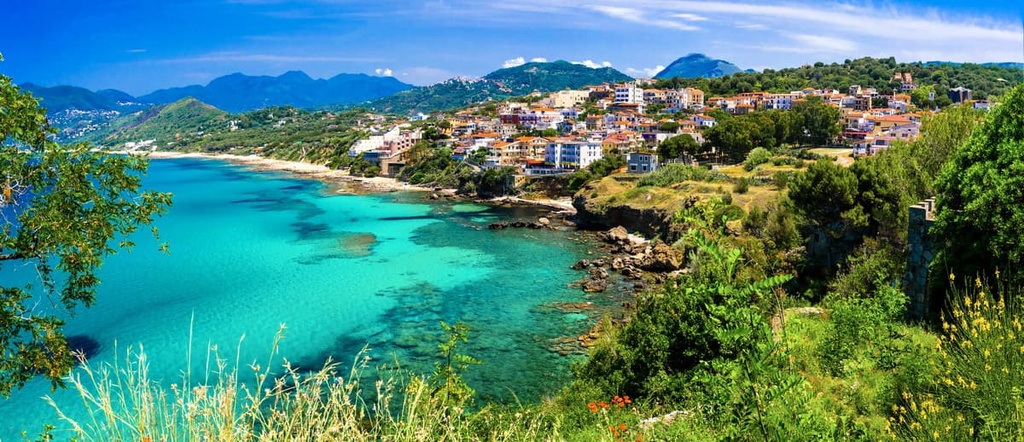
Of the many beautiful seaside resorts that are located within Cilento, Vallo di Diano and Alburni National Park, Palinuro is arguably the finest. Palinuro is the perfect spot for a peaceful getaway in the region and it rivals many of the towns that are located along the Amalfi Coast with its beauty.
Popular hotels in Palinuro include Hotel Santa Caterina, Hotel Palinuro, and Grand Hotel San Pietro.
The town of Castellabate is, in fact, a collection of medieval villages that sit on a hillside overlooking the ocean. It's a gorgeous area of Cilento, and it was even the setting of a movie, Benvenuti al Sud (Welcome to the South), which highlights the town's charm.
Castellabate is known for its cuisine and produce, including cheeses, wines, and salami. The town of Castellabate is also a great destination for hiking, as Monte Stella (1,131 m/3,710 ft) is situated 25 km (15.5 mi) away. During your stay in the community, don’t miss out on the view of Cilento's coastline from the Belvedere San Costabile.
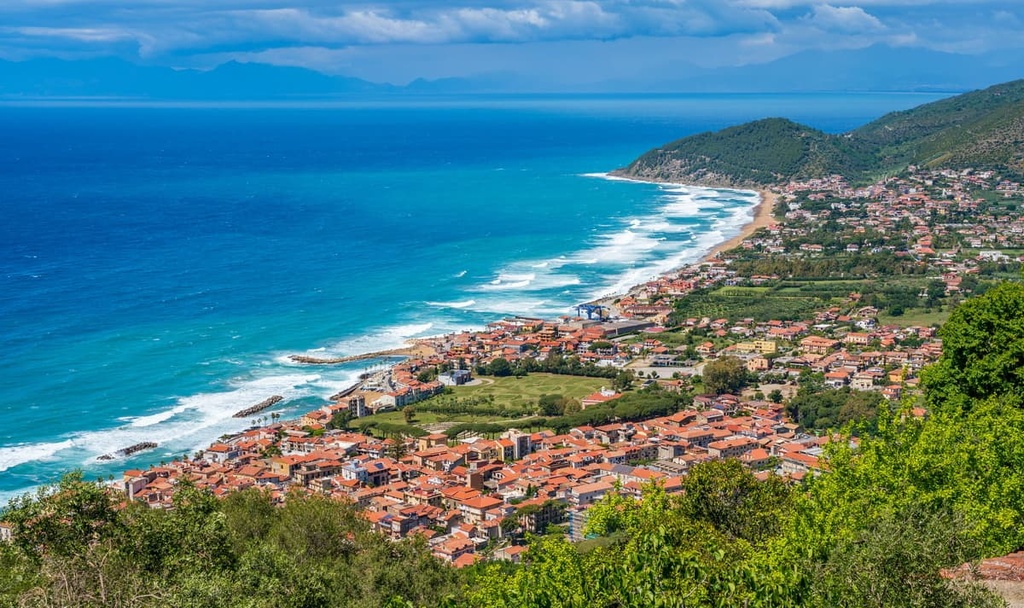
Popular hotels in Castellabate include Grand Hotel Santa Maria, Hotel Il Cefalo, and Hotel Costa D'Oro.
Nestled between two headlands on Cilento's southern coastline is the quaint fishing village of Marina di Camerota. Similar to Palinuro, Marina di Camerota is a popular summer resort thanks to its Blue Flag beaches. It's also home to the Grotta della Cala, a coastal cave where 540,000-year-old Homo Camerotensis remains were discovered in the 1980s.
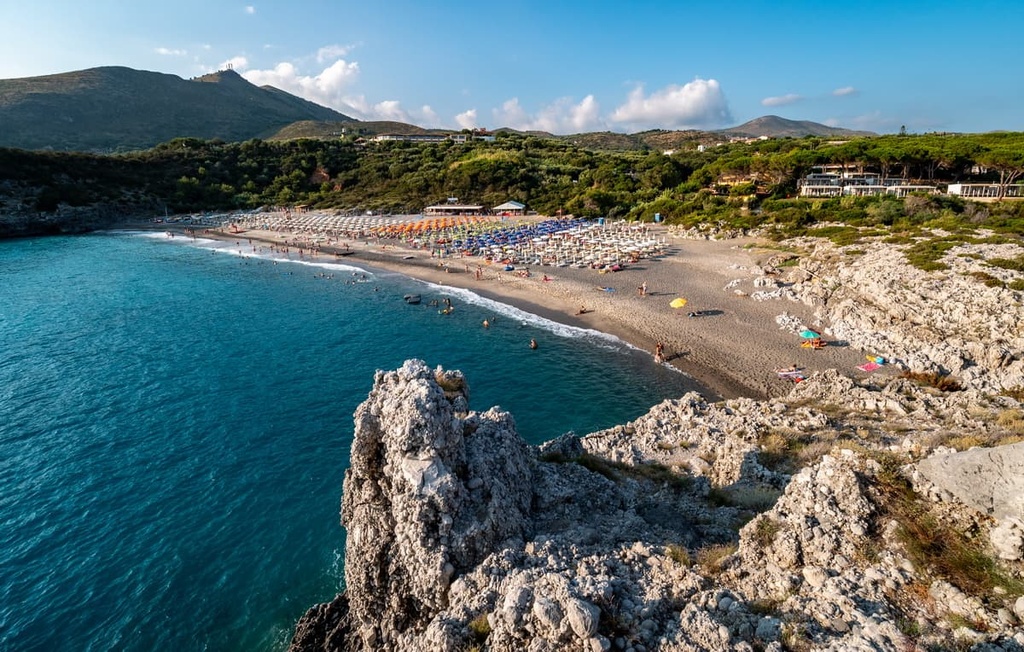
Marina di Camerota is a unique beauty, with its small inlets dotted with olive trees and Mediterranean brush. Several hiking areas are located within 20 km (12.4 mi) of Marina di Camerota, too, including Monte Bulgheria (1,225 m/4,019 ft).
Popular hotels in Marina di Camerota include Hotel Calanca, Albergo Delfino, and Albergo Tirreno.
Located at the heart of Cilento, Vallo di Lucania provides easy access to some of the best mountains in Cilento, Vallo di Diano and Alburni National Park. The town is situated within 15 km (9 mi) of the summit of Monte Gelbison (1,705 m/5,594 ft) and 30 km (18.5 mi) from Monte Stella.
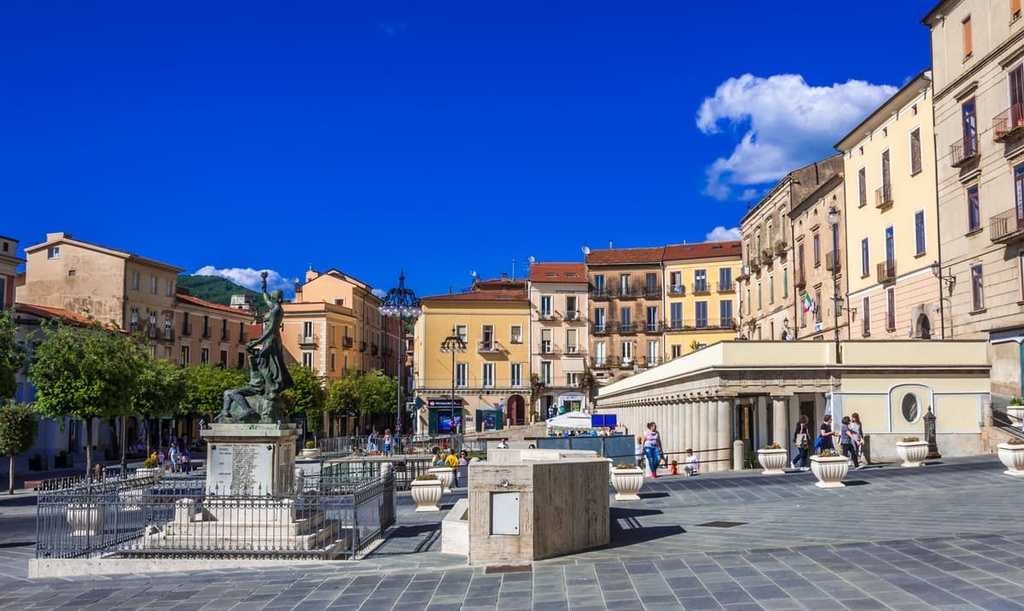
Vallo della Lucania also has a few interesting local attractions for visitors to enjoy, such as the Cathedral di St. Pantaleone. Popular hotels in Vallo della Lucania include Ruggiero Park Hotel and Hotel Giardino San Michele.
Explore Parco Nazionale Cilento, Vallo di Diano e Alburni with the PeakVisor 3D Map and identify its summits.








